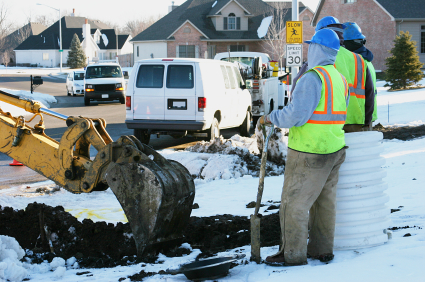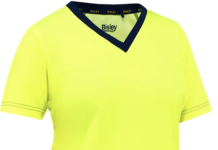As the weather turns colder many people continue to work and play outdoors. For instance, hiking in the fall and winter can be extremely rewarding. It is important that working people keep themselves well dressed to keep safe from discomfort and even frostbite. When dressing for colder weather consider your internal thermostat. Some people usually run hot while others seem to always be cold…like my wife. If it’s the former then multiple layers would probably work better. If you’re generally cold heavier clothing could be the better option. Either way, the best way to keep warm is by wearing layers.
Insulation works by trapping air in tiny pockets that retain heat, forming a bubble of warmth around your skin. Each layer traps more air, allowing more warmth to be captured. The more layers you wear, the warmer you will become. Another benefit of layering is it gives you the flexibility to add or remove layers, depending on the weather and your level of activity.
The three main layers are wicking, insulating and weather protection. The wicking layer is worn next to your skin, usually consisting of long underwear. This layer should also be snug without being constricting. Look for thermal underwear made of a synthetic fiber that has “wicking” power. This means the fibers will move moisture away from your skin and pass it through the fabric so it will evaporate. This keeps you warm, dry and comfortable. Polypropylene and wool are materials with good wicking capabilities. The insulating layer is the middle layer that includes wool socks, sweaters, vests and pullovers. This layer is meant to keep heat in and cold out, which happens by trapping the air between fibers. Fleece maintains its insulating ability even when wet and spreads the moisture out so it dries quickly. Wool is very warm and also wicks away moisture. The exterior layer, sometimes called outerwear, protects you from the harsh elements is generally a shell and pants. These articles should repel water from snow, sleet or rain and block the wind but also let perspiration evaporate. Beware of cotton, which is absorbent and decreases your warmth factor. Wear other materials instead that will keep you more protected for cold weather.
Keeping your hands, feet, head and face warm is critical when you are working outdoors. These outer areas are the most likely to be affected by frostbite and half of your body heat escapes through your head. Having a hood on the exterior layer of your clothing is an excellent idea. In rain or snow it will keep your head dry. In more extreme situations a face mask might be necessary to protect you from the biting wind and frostbite. Cold Avenger has a great face mask that works as a ventilator to warm the outside air that you breathe in up to 60 degrees. A synthetic material that breaths well is important for this article as well for condensed breath could accumulate and freeze the mask around you mouth and nose. Even glacier glasses or ski goggles may be needed to provide protection to the skin around the eyes. These may only be needed for extremely cold working conditions.
Layers also work best for your feet. In the fall and winter you should wear two layers of socks. An inner liner sock of synthetic material should be worn to wick moisture away and an outer sock of SmartWool or CoolMaxblend to add insulation will help keep the cold out. Be sure not to wear too many socks that can cause a decrease in the circulation. This can be dangerous and uncomfortable.
Two layers also work best when it comes to your hands. An inner layer of a glove, preferably of a light and thin synthetic material works well. Even natural wool can provide good protection. The outer shell should be a mitten. Mittens offer more insulation than gloves and provide more overall comfort. When it comes time to use your hands you can remove the shell while keeping your skin protected by the inner glove. Look for gloves and mittens that use waterproof, breathable fabrics. Don’t buy gloves or mittens that are too tight. There should be a little air space at the tips or your fingers to provide better warmth for your insulated gloves. Consider the activity to determine the proper outfitting. Mittens may be ideal for certain job functions and not work for others.
The temperature of each body part directly relates to the blood flow to the area. Physical activity counters the cold by increasing the airflow or warming circulation. Standing increases the flow, so avoid sitting. Digestion produces heat. Hot and spicy foods have a warming effect. Eating foods high in iron such as red meats and green leafy vegetables can help keep you warm. The body needs iron to make the thyroid hormone that stimulates heat production. Follow this link for more information on “how to” stay warm in the cold.




